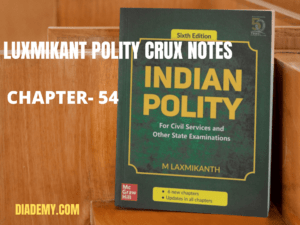
NITI Aayog
| August -2014 | Planning Commission [65-year-old] scrapped. |
| 1 Jan, 2015 | NITI Aayog (National Institution for Transforming India)
Created by executive Resolution of GOI, hence neither a Constitutional body nor a statutory. |
| NITI Aayog Policy | Premium policy‘Think Tank’ of GOI:
· Center-state one way policy · Command & Control · Think- Tank · Uses bottom up approach rather than top-down · Lot of change happened politically, socially, economically so there is a need of change. Catalyst of development; nurturing an environment through a, holistic approach. · State role as equal partners in national development – cooperative Federalism · Think Tank- expertise on stragic issues, knowledge hub. · Collaborative platform – – facilitating implementation – All executive closer. |
| Rationale | Planning Commission-
· Redundant ; In command economy structure in diversified country · One size fits all – obsolete |
| Composition | a. Chairperson: PM
b. Governing Council: CM of all States and UT’s and Lt. General of other UT’s c. Regional Councils: formed to address specific issues affecting more than one state or a region – convened by PM – comprises of CM of dates/Lt. General of UT in the region d. Special invitees: experts, specialist and practitioners with relevant knowledge – invited by PM e. Full time organisational framework: 1. Vice chairperson- appointed by PM – enjoy the rank of Cabinet Minister 2. Members: full time – rank of minister of state 3. Part-Time Members: Max 2 – from leading Uni or research org – on rotation bases 4. Official number: max 4 -nominated by PM – of union Council of ministers. 5. CEO: apt by PM – rank of Secretary to GOI – fixed tenure 6. Secretariat: if necessary |
| Specialised Wings | 1. Research Wing
2. Consultancy Wing 3. Team India Wing |
| Objectives | · Cooperative federalism (inc.)
· Establish Collaboration & work on · ‘National agenda’ · Long term strategic goals setup · Focus on agenda of development |
| Aims | · Govt ‘Enabler’ not a provider for first and last resort.
· Economically vibrant middle class (Inc) · India as a global active player. · Technology (Inc) – opacity & potential for misadventure in govt(dec) · Urbanisation as an opportunity to create a secure & whole some habitat. |
| Guiding Principles | · Antodaya: Prioritise Service an uplift poor.
· Inclusion: empower vulnerable and marginalised section. · Village: integrate villages into development process. · Demographic dividend: harness people of India the greatest as it through education and skilling · People’s participation: transform the development process into a people driven one. · Governance: nurture and open, transparent, accountable style of governance. · Sustainability: maintain sustainability at the core of planning and developmental process – build on the ancient tradition of respect for environment |
| Critics | Opposition criticism:
· Move is just a “fluff” and mere “gimmickry”. · New body will pave the way for discrimination, as “corporates will call the shots” in policy. |
| Planning Commission | 1950 – by executive Resolution of GoI.
A supreme organ for planning ( social & economic development) |
| Function | Plan for ‘balance utilisation’.
To check progress & Recoment. |
| Composition | PM + Dy. Chairman + server minister = 4-7 expert member + member secretary (IAS) |
| Criticism | · Staff agency – advisory role
· But took the form of social cabinet or economic cabinet or Parallel Cabinet or the fifth wheal of the coach. · No representation of state as advisory body – administration. |
| Attached Offices of NITI Aayog | 1. National Institute of labour economics research and development – NILERD – formerly Institute of applied manpower research
2. Development monitoring and evaluation office. |
| NDC (National Development Council) | Ø Last meeting was in Dec 2012.
Ø Rumour for ending NDC, till now no resolution. Ø PM + all union Cabinet minister + CM of all state + CM/Ad of UTs + Member of Planning Commission Ø Secretary of planning commission |
| Objective | Secure Plan for cooperation of state, common economic policies. Balance & rapid growth. |
| Functions | Guideline for nation program
Make assessment of resource. Consider social – economic policies. Review working of National Plan. Five Year plan was Union Cabinet after approval – N.D.C., By Niti Aayog. |
| Importance | Highest body, for policy matter – reg. Social & economic development. Non binding nature. |
| Critical Evaluation | Super cabinet, upper stamp of decision taken by Central government. |
Get all essential Crux notes by clicking here https://diademy.com/product/staticcrux/